-
 Bitcoin
Bitcoin $108,262.4325
-1.40% -
 Ethereum
Ethereum $2,518.2882
-2.94% -
 Tether USDt
Tether USDt $1.0003
-0.01% -
 XRP
XRP $2.2262
-1.71% -
 BNB
BNB $653.9254
-1.55% -
 Solana
Solana $148.1036
-3.11% -
 USDC
USDC $1.0000
0.01% -
 TRON
TRON $0.2829
-1.45% -
 Dogecoin
Dogecoin $0.1639
-4.82% -
 Cardano
Cardano $0.5742
-4.43% -
 Hyperliquid
Hyperliquid $38.9506
-3.95% -
 Sui
Sui $2.9040
-4.34% -
 Bitcoin Cash
Bitcoin Cash $484.8307
-2.62% -
 Chainlink
Chainlink $13.1971
-3.73% -
 UNUS SED LEO
UNUS SED LEO $9.0822
0.51% -
 Avalanche
Avalanche $17.8613
-4.01% -
 Stellar
Stellar $0.2385
-2.26% -
 Toncoin
Toncoin $2.7570
-3.88% -
 Shiba Inu
Shiba Inu $0.0...01145
-3.99% -
 Litecoin
Litecoin $86.9999
-2.43% -
 Hedera
Hedera $0.1538
-3.90% -
 Monero
Monero $313.7554
-2.03% -
 Polkadot
Polkadot $3.3681
-5.08% -
 Dai
Dai $1.0000
0.00% -
 Ethena USDe
Ethena USDe $1.0001
-0.01% -
 Bitget Token
Bitget Token $4.4401
-2.97% -
 Uniswap
Uniswap $6.9644
-8.41% -
 Pepe
Pepe $0.0...09666
-4.79% -
 Aave
Aave $266.5686
-5.04% -
 Pi
Pi $0.4713
-4.95%
How to use trading volume to analyze FORM trend? What is the relationship between buying and selling points and trading volume?
To analyze FORM trends, traders should observe price movements alongside trading volume, confirming trends when both increase or decrease together.
May 01, 2025 at 08:14 am
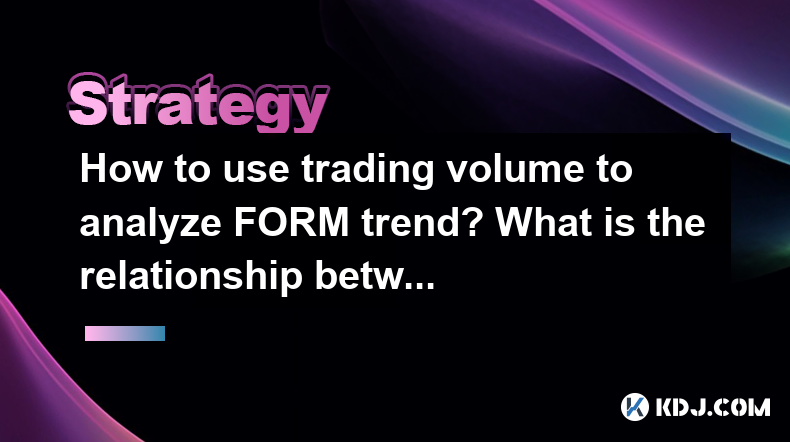
Trading volume is a crucial indicator that traders use to understand market trends and make informed decisions. When it comes to analyzing the trend of FORM, a cryptocurrency, trading volume can provide insights into the strength of the trend and potential buying and selling points. In this article, we will explore how to use trading volume to analyze the FORM trend and understand the relationship between buying and selling points and trading volume.
Understanding Trading Volume in the Context of FORM
Trading volume refers to the number of FORM tokens that are traded within a given period. It is an essential metric because it indicates the level of activity and interest in the cryptocurrency. High trading volume often suggests strong interest and can confirm the validity of a trend, whether it is bullish or bearish.
To analyze the trend of FORM using trading volume, traders need to look at the volume data alongside price movements. When the price of FORM increases with a corresponding increase in trading volume, it suggests that the upward trend is strong and likely to continue. Conversely, if the price of FORM decreases with an increase in trading volume, it indicates a strong downward trend.
Identifying Trends with Trading Volume
To effectively use trading volume to identify trends in FORM, traders should follow these steps:
- Observe the price chart: Look at the price movements of FORM over a specific period. This could be daily, weekly, or monthly, depending on your trading strategy.
- Compare with trading volume: Overlay the trading volume data on the price chart. Most trading platforms provide this feature, allowing you to see the volume bars alongside the price candles.
- Analyze the correlation: Look for periods where the price movement is accompanied by a significant change in trading volume. A strong trend is often supported by high trading volume.
- Confirm the trend: If the price of FORM is rising and the trading volume is also increasing, it confirms a bullish trend. If the price is falling and the volume is increasing, it confirms a bearish trend.
Using Trading Volume to Identify Buying and Selling Points
Trading volume can also help traders identify potential buying and selling points for FORM. Here’s how:
- Buying points: Look for periods where the price of FORM is increasing, and the trading volume is also increasing. This indicates strong buying interest and suggests that the price may continue to rise. A good buying point is often found at the beginning of such a trend.
- Selling points: Identify periods where the price of FORM is decreasing, and the trading volume is increasing. This suggests strong selling pressure and indicates that the price may continue to fall. A good selling point is often found at the beginning of such a trend.
Volume Spikes and Their Significance
Volume spikes are sudden and significant increases in trading volume. They can provide valuable insights into potential trend changes or reversals in FORM. Here’s how to interpret volume spikes:
- Volume spike with price increase: If there is a volume spike and the price of FORM increases, it suggests strong buying interest and a potential continuation of the bullish trend.
- Volume spike with price decrease: If there is a volume spike and the price of FORM decreases, it suggests strong selling pressure and a potential continuation of the bearish trend.
- Volume spike with price reversal: If a volume spike occurs at the same time as a price reversal, it can indicate a significant shift in market sentiment. For example, if the price of FORM was in a downtrend and suddenly reverses with a volume spike, it could signal the start of a new bullish trend.
Using Volume Indicators for Deeper Analysis
In addition to raw trading volume data, traders can use volume indicators to gain deeper insights into the FORM trend. Some popular volume indicators include:
- On-Balance Volume (OBV): OBV is a cumulative indicator that adds volume on up days and subtracts volume on down days. A rising OBV suggests bullish pressure, while a falling OBV suggests bearish pressure.
- Volume Weighted Average Price (VWAP): VWAP is the average price of FORM weighted by volume. It helps traders identify whether the current price is above or below the average price, which can indicate potential buying or selling opportunities.
- Volume Oscillator: The volume oscillator measures the difference between two moving averages of volume. A positive value indicates increasing volume, which can confirm a trend, while a negative value indicates decreasing volume, which can signal a weakening trend.
To use these indicators effectively, follow these steps:
- Add the indicator to your chart: Most trading platforms allow you to add volume indicators to your price chart.
- Analyze the indicator alongside price and volume: Look for divergences or confirmations between the indicator, price, and volume. For example, if the price of FORM is rising and the OBV is also rising, it confirms a bullish trend.
- Make trading decisions based on the analysis: Use the insights from the volume indicators to identify potential buying and selling points for FORM.
The Relationship Between Buying and Selling Points and Trading Volume
The relationship between buying and selling points and trading volume is fundamental to understanding market dynamics. Buying points are often associated with increasing trading volume, as more traders enter the market and drive the price up. Conversely, selling points are often associated with increasing trading volume, as more traders exit the market and drive the price down.
To effectively use trading volume to identify buying and selling points, traders should:
- Monitor volume trends: Keep an eye on the overall trend of trading volume. A consistent increase in volume can signal a strong trend, while a decrease in volume can signal a weakening trend.
- Look for volume confirmations: Use volume data to confirm price movements. If the price of FORM breaks out of a resistance level with high volume, it is a strong buying signal. If the price breaks below a support level with high volume, it is a strong selling signal.
- Use volume indicators: Incorporate volume indicators like OBV, VWAP, and the volume oscillator to gain a more comprehensive understanding of the market. These indicators can help confirm or contradict the signals provided by raw volume data.
Frequently Asked Questions
Q: Can trading volume alone predict the future price of FORM?
A: While trading volume is a valuable indicator, it cannot predict the future price of FORM with certainty. It should be used in conjunction with other technical and fundamental analysis tools to make more informed trading decisions.
Q: How often should I check the trading volume of FORM?
A: The frequency of checking trading volume depends on your trading strategy. For short-term traders, checking volume on an hourly or daily basis may be necessary. For long-term investors, weekly or monthly checks may suffice.
Q: Is there a specific volume threshold that indicates a strong trend in FORM?
A: There is no universal volume threshold that indicates a strong trend, as it can vary based on market conditions and the specific cryptocurrency. Traders should look for significant changes in volume relative to the average volume over a given period.
Q: Can low trading volume be a sign of a potential trend reversal in FORM?
A: Low trading volume can sometimes indicate a weakening trend or a potential reversal, especially if it occurs alongside a price movement. However, it is essential to consider other indicators and market factors before making a trading decision based solely on low volume.
Disclaimer:info@kdj.com
The information provided is not trading advice. kdj.com does not assume any responsibility for any investments made based on the information provided in this article. Cryptocurrencies are highly volatile and it is highly recommended that you invest with caution after thorough research!
If you believe that the content used on this website infringes your copyright, please contact us immediately (info@kdj.com) and we will delete it promptly.
- Bitcoin's Pattern Break: Are HODLers the Key to the Next Surge?
- 2025-07-04 18:50:12
- Bitcoin Price, Trump's Bill, and the $150K Dream: A NYC Take
- 2025-07-04 19:50:12
- Ethereum, LILPEPE, and the July Bounce: Will Pepe Steal ETH's Thunder?
- 2025-07-04 19:10:12
- Binance Institutional Loans: Unlocking 4x Leverage and Zero Interest for Whales
- 2025-07-04 19:15:12
- Bitcoin Bull Run: Analysts Eye Peak in Late 2025?
- 2025-07-04 19:20:13
- Pepe Indicators, Bullish Forecast: Can the Meme Coin Rally?
- 2025-07-04 19:25:12
Related knowledge
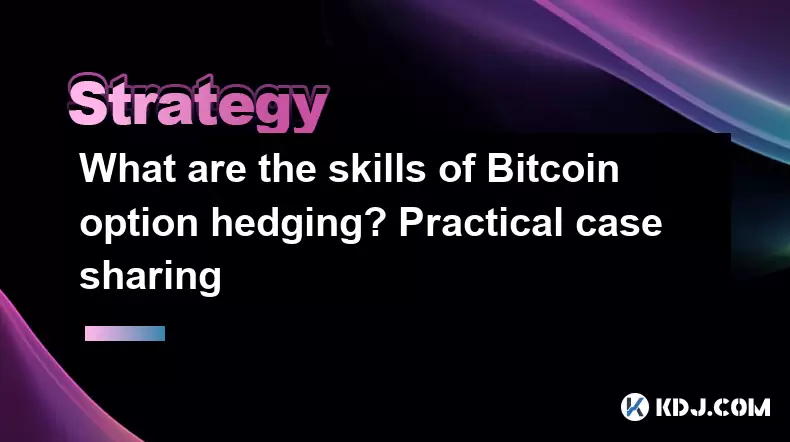
What are the skills of Bitcoin option hedging? Practical case sharing
Jun 24,2025 at 04:01pm
Understanding Bitcoin Option HedgingBitcoin option hedging is a risk management strategy used by traders and investors to protect their positions in the volatile cryptocurrency market. By using options, individuals can limit potential losses while retaining the opportunity for profit. In essence, it allows one to insulate against adverse price movements...
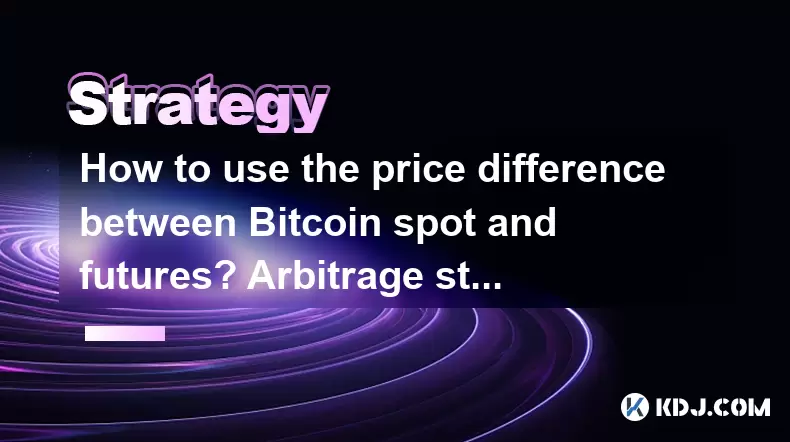
How to use the price difference between Bitcoin spot and futures? Arbitrage strategy
Jun 20,2025 at 02:56pm
Understanding Bitcoin Spot and Futures MarketsTo effectively leverage arbitrage opportunities between Bitcoin spot and futures markets, it's essential to understand the fundamental differences between these two types of markets. The spot market refers to the direct buying and selling of Bitcoin for immediate delivery at the current market price. In cont...

How to increase DeFi lending income? Strategy and risk analysis
Jun 24,2025 at 02:08pm
Understanding DeFi Lending and Its Income PotentialDeFi (Decentralized Finance) lending has emerged as a popular way to earn passive income in the cryptocurrency space. Unlike traditional banking systems, DeFi lending platforms allow users to lend their crypto assets directly to borrowers without intermediaries. The lenders earn interest based on the su...
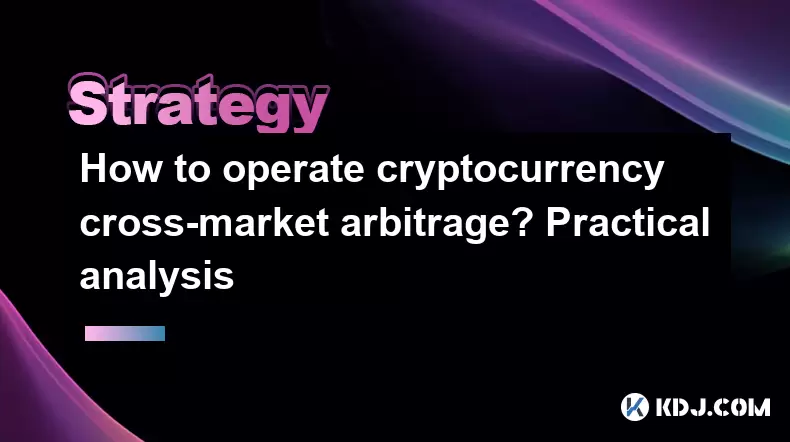
How to operate cryptocurrency cross-market arbitrage? Practical analysis
Jun 23,2025 at 04:01am
Understanding Cryptocurrency Cross-Market ArbitrageCryptocurrency cross-market arbitrage involves taking advantage of price differences for the same digital asset across different exchanges. The core idea is to buy low on one exchange and sell high on another, capturing the profit from the discrepancy. This strategy relies heavily on real-time market da...

How to make profits from high-frequency cryptocurrency trading? Sharing core skills
Jun 19,2025 at 05:07pm
Understanding High-Frequency Cryptocurrency TradingHigh-frequency trading (HFT) in the cryptocurrency market involves executing a large number of trades at extremely fast speeds, often within milliseconds. This method relies on small price discrepancies across exchanges or within a single exchange’s order book. Traders use complex algorithms and ultra-l...
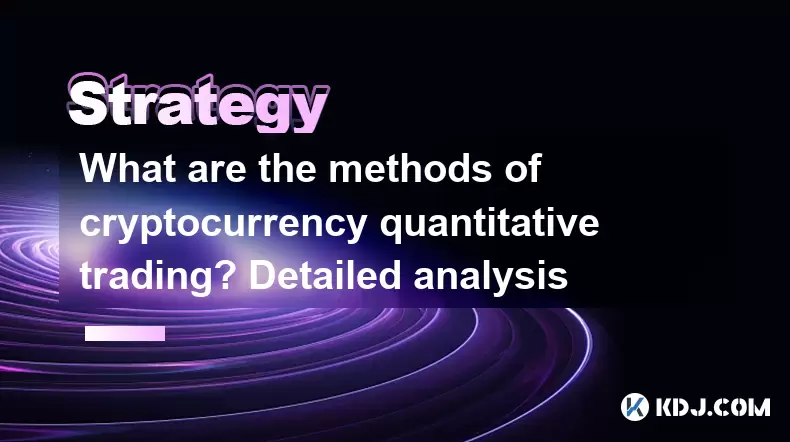
What are the methods of cryptocurrency quantitative trading? Detailed analysis
Jun 22,2025 at 11:07pm
Understanding the Core of Cryptocurrency Quantitative TradingCryptocurrency quantitative trading refers to the use of mathematical models and algorithms to execute trades in the digital asset market. Unlike traditional discretionary trading, which relies heavily on human judgment, quantitative trading leverages data-driven strategies to identify profita...

What are the skills of Bitcoin option hedging? Practical case sharing
Jun 24,2025 at 04:01pm
Understanding Bitcoin Option HedgingBitcoin option hedging is a risk management strategy used by traders and investors to protect their positions in the volatile cryptocurrency market. By using options, individuals can limit potential losses while retaining the opportunity for profit. In essence, it allows one to insulate against adverse price movements...

How to use the price difference between Bitcoin spot and futures? Arbitrage strategy
Jun 20,2025 at 02:56pm
Understanding Bitcoin Spot and Futures MarketsTo effectively leverage arbitrage opportunities between Bitcoin spot and futures markets, it's essential to understand the fundamental differences between these two types of markets. The spot market refers to the direct buying and selling of Bitcoin for immediate delivery at the current market price. In cont...

How to increase DeFi lending income? Strategy and risk analysis
Jun 24,2025 at 02:08pm
Understanding DeFi Lending and Its Income PotentialDeFi (Decentralized Finance) lending has emerged as a popular way to earn passive income in the cryptocurrency space. Unlike traditional banking systems, DeFi lending platforms allow users to lend their crypto assets directly to borrowers without intermediaries. The lenders earn interest based on the su...

How to operate cryptocurrency cross-market arbitrage? Practical analysis
Jun 23,2025 at 04:01am
Understanding Cryptocurrency Cross-Market ArbitrageCryptocurrency cross-market arbitrage involves taking advantage of price differences for the same digital asset across different exchanges. The core idea is to buy low on one exchange and sell high on another, capturing the profit from the discrepancy. This strategy relies heavily on real-time market da...

How to make profits from high-frequency cryptocurrency trading? Sharing core skills
Jun 19,2025 at 05:07pm
Understanding High-Frequency Cryptocurrency TradingHigh-frequency trading (HFT) in the cryptocurrency market involves executing a large number of trades at extremely fast speeds, often within milliseconds. This method relies on small price discrepancies across exchanges or within a single exchange’s order book. Traders use complex algorithms and ultra-l...

What are the methods of cryptocurrency quantitative trading? Detailed analysis
Jun 22,2025 at 11:07pm
Understanding the Core of Cryptocurrency Quantitative TradingCryptocurrency quantitative trading refers to the use of mathematical models and algorithms to execute trades in the digital asset market. Unlike traditional discretionary trading, which relies heavily on human judgment, quantitative trading leverages data-driven strategies to identify profita...
See all articles

























































































